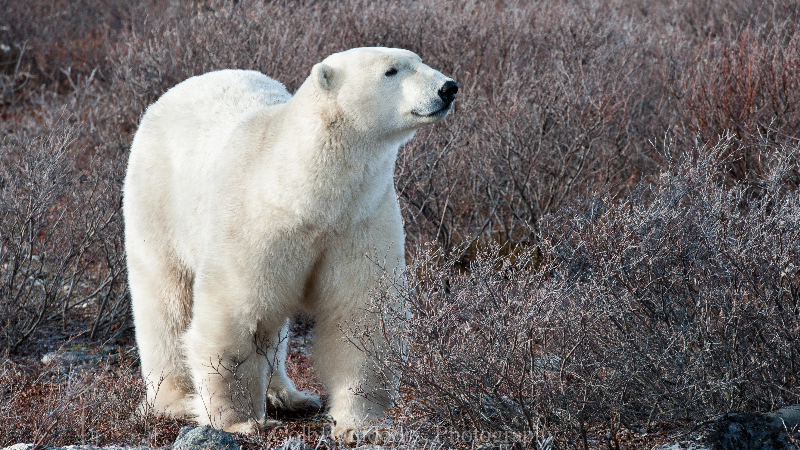by Steve Selden | Sep 22, 2017 | Conservation

Narwhal tusks can grow more than 8 feet in length and demand high prices on the black market. Paul Nicklen/Getty Images photo.
Retired Canadian Mountie Gregory Logan, 60, of Saint John has been sentenced to five years and two months in a United States federal prison for smuggling nearly 300 Narwhal tusks with a value of $1.5 – $3 million US into Maine. The contraband tusks were hidden in false compartments in Logan’s vehicle according to U.S. prosecutors. Once in the United States, they were shipped from a post office box in Ellsworth, Maine, to wealthy buyers all across the country.
This story was first reported on in a March 2016 blog post on this site.
Narwhals, protected in the United States and Canada, grow ornate, spiral tusks that can grow longer than eight feet and are coveted for use in carvings, jewelry-making, and general display. Under the 1972 Marine Mammal Protection Act, it is illegal to transport any parts of a Narwhal across federal borders.
According to the indictment, Logan smuggled the narwhal tusks into the U.S. in 2000 while he was working as a Mountie. He retired from the police force in 2003.
Logan filled orders with his U. S. co-conspirators according to what they wanted in terms of quantity and size and then contacted northern Inuit hunters to supply the tusks.
“Unlawful wildlife trade like this undermines efforts by federal, state, and foreign governments to protect and restore populations of species like the narwhal, a majestic creature of the sea,” said acting Assistant Attorney General Jeffrey H. Wood of the Department of Justice’s Environment and Natural Resources Division.
U.S. District Court Judge John A. Woodcock sentenced Logan to money-laundering and conspiracy charges to which he pleaded guilty. Smuggling charges were dropped under a plea agreement. Logan has paid $350,000 in fines and served four months of home detention on a related wildlife – smuggling charge to which he plead guilty.
Co-conspirator and U.S. resident Andrew Zarauskas, of Union, N.J., was convicted and sentenced to 33 months. A Tennessee man had charges dismissed. Logan was pinned as the leader and organizer of the scheme and therefore sentenced most harshly.
“He directed and organized the way in which the tusks were smuggled and shipped as well as the ways in which the proceeds would ultimately be laundered into Canada. In sum, (Logan) was the ‘hub’ without whom the ‘spokes’ could not have succeeded in their joint criminal enterprise,” they said in court documents.
The U.S. Department of Justice detailed how the scheme worked in a news release:
“Logan knew that his customers would re-sell the tusks for a profit and in an attempt to increase that resale price, Logan would occasionally provide fraudulent documentation claiming that the tusks had originally belonged to a private collector in Maine who had acquired them legally,” it said.
“In addition to shipping the tusks from Maine, Logan maintained a post office box in the Ellsworth shipping store as well as an account at a bank in Bangor. Logan instructed his customers to send payment in the form of cheques to the post office box, or wire money directly to his Maine bank account.
“Logan then transported the money to Canada by having the shipping store forward his mail to him in Canada, and by using an ATM card to withdraw money from his Maine bank account at Canadian ATM machines. At times, Logan also directed his customers to send funds directly to him in Canada.”
by Steve Selden | Mar 25, 2016 | Conservation
A retired RCMP, recently convicted and sentenced of illegally smuggling narwhal tusks into the United States from Canada, has been extradited to the U.S. on related money-laundering charges in Maine. A New Jersey man, Andrew Zarauskas has also was convicted in 2014 and is currently serving time in prison. Jay Conrad from Tennessee awaits trial.
Gregory Logan, 58, of Woodmans Point, N.B., is being held in custody pending his trial date of May 3 in U.S. District Court in Bangor, Maine
Charges include smuggling of 250 narwhal tusks with a value of over two million US dollars into the United States by concealing them in false compartments in his vehicle. Prosecution asserts that Logan had been transporting tusks across the border since 2000 when he was still employed by the RCMP. He allegedly brokered the tusks to private collectors and then transferred the funds outside the US.

Narwhal tusks that were evidence in the trial of Andrew J. Zarauskas. Linda Coan O’Kresik | BDN photo.
Logan, whom was fined $385,000 and four months house arrest under an eight month conditional sentence, faces up to 20 years in prison and fines of up to $500,000 US with the money laundering charges in the states.
“As this case shows, wildlife trafficking can involve millions in illegal transactions, compounding the damage it does to the wealth and diversity of life on our planet,” Assistant Attorney General John Cruden, of the Justice Department’s environment and natural resource’s division, said in a statement. By pursuing the criminal financial transactions that flow from trafficking, we are making [it] a less attractive and more costly enterprise.”
Narwhals live year-round in the Arctic and are a protected species under the Convention on International Trade in Endangered Species of Wild Fauna and Flora (CITES).
Law prohibits importing narwhals, or any of their parts, into the United States, barring a special permit, under the Marine Mammal protection Act. Spiraled tusks, found predominately in males are actually a tooth protruding through the upper jaw, reach up to ten feet and can fetch nearly $100 an inch on the black market.
Co – conspirators Andrew Zarauskas, of Union, New Jersey,has already been convicted and sentenced to nearly three years in prison while Jay Conrad, of Lakeland, Tennessee, has plead guilty and awaits sentencing.

Andrew J. Zarauskas of Union, N.J. (left) was convicted of smuggling narwhal tusks into the US from Canada. Gabor Degre | BDN photo.
Evidence at trial showed Zarauskas, 61, doubled his money on the $85,000 he paid Logan between 2002 and 2008 for approximately 33 tusks. What was particularly egregious about Zarauskas’ case was that he was working as a confidential informer for the U. S. Fish and Wildlife Service in a separate case that did not involve narwhal tusk smuggling.
by Steve Selden | Nov 3, 2015 | Churchill Photography
These recent photos from Natural Habitat Adventures guide Colby Brokvist are some fantastic polar bear shots out in the Churchill Wildlife Management Area. Polar bear activity has been increasing out in the CWMA with the recent seal – kill out at Gordon Point. Sparring at the Tundra Lodge and around the area has continued to peak as well. Northern lights have been exceptional this season and hopes that the trend will continue through the second half. In fact this evening presents incredible viewing potential even down through some of the United States due to solar storms produced through intensified reactions in the Earth’s atmosphere. Lets hope that the sky is clear in Churchill and wherever the lights might be visible!

Polar bear close – up on the tundra. Colby Brokvist photo.

Sparring polar bears in the Churchill Wildlife Management Area. Colby Brokvist photo.

Majestic polar bear on a chilly, frosty morning in Churchill. Colby Brokvist photo.

Polar bears in the Churchill Wildlife Management Area. Colby Brokvist photo.
by Steve Selden | Apr 28, 2015 | Churchill News
If you have been one of the lucky ones to have tried curling in Churchill while on a wildlife adventure to see polar bears or perhaps the northern lights you have surely had some fun and laughs. The game is slowly spreading in popularity throughout the United States but still remains an enigma to most outside of Canada.

Churchill Curling club participants from Natural Habitat Adventures. Karen Walker photo.
Here are a few secret tips to Churchill curling at the rink inside the town complex. if you have not yet ventured to Churchill, try and include this activity in a future trip to the polar bear capitol of the world.
1. – Unless you know the caretaker of the curling rink personally it will first be a little tricky to even find the somewhat hidden location of the rink and confirm that the ice is in place. Yes, it’s in the town complex but the entrance is located in a less frequented hallway with no exterior windows to view in.

2. – The rules of the game are fairly complex and it will be impossible to pick them all up in one session. The main thrust of the game is to “throw”…rather glide on the ice, eight stones weighing 42 lbs. with handles and try to get closest to the middle “target” button or painted spot underneath the ice. There’s quite a bit of strategy to all the throws leading up to the final stone for each team of four.
3.– Understand that “sweeping” is not the kind you do in your home to clean up. Sweeping in curling involves two of the four teammates sliding ahead of the stone, with special shoe pads, and a special broom, that more accurately resembles a padded squeegee. The idea is to adjust the sweeping in front of the “stone” to manage the speed and for the really experienced sweepers even the direction to a slight degree. I was able to play this position in a local fun “bonspiel” in Churchill once and found it to be very fun and incredibly effective when you get the hang of it.

Churchill curling club conducting league games. Churchill Curling Club photo.
4. – When the skip, the person who throws the stones, yells “hurry”, it is quite entertaining and unique to this sport. What he/she is requesting is for the sweepers to sweep faster in front of the stone and therefore create a smoother and faster surface. The stone will increase in speed by a very slight amount though this may be the difference in a winning shot.
5. – Don’t touch the stones until the shot is over. This includes the sweepers and any teammates waiting at the end of the sheet for the stone to arrive near the target. If anyone on a team touches the stone, even with a broom, the shot is disqualified. Bad etiquette.

Natural Habitat travelers enjoy a curling experience in Churchill. Karen Walker photo.
6. – The curling lounge is almost as important as the curling rink itself. Churchill’s club lounge is a glass enclosed facility that is heated and overlooks the rink from above. A huge part of the curling experience is the camaraderie before, during and after the game or games are being played. Churchill, being such a tight knit town in a generally cold weather environment, especially tends to unite through this activity and gathering space.

Inside the Churchill Curling Club lounge. Churchill Curling Club photo.
7. – Plan on an unforgettable experience of a lifetime. This very well could be the only time in your life that you can experience the fun of playing this age – old sport. When I participated in the tournament in Churchill I was convinced I would return home to the US and find a curling club to join…that was 10 years ago and I still have not played the game again. I did return with a trophy since I was paired up with some of the town’s best curlers. Enjoy it while you have an opportunity!














